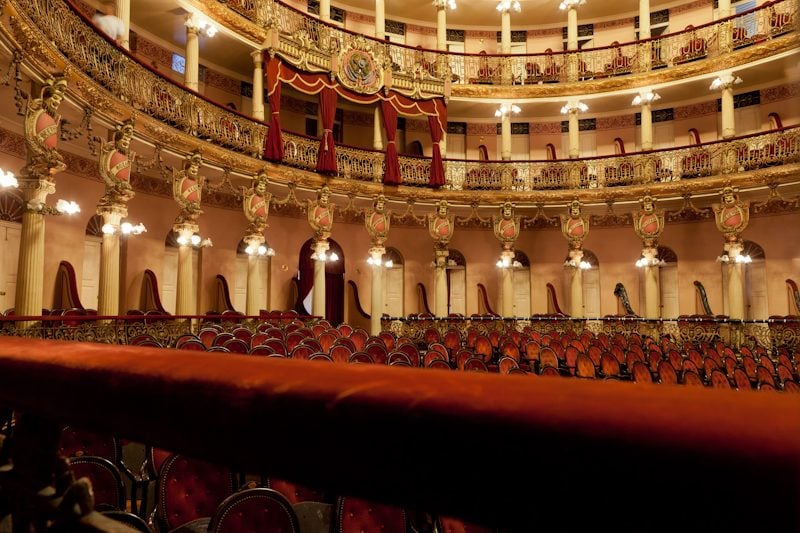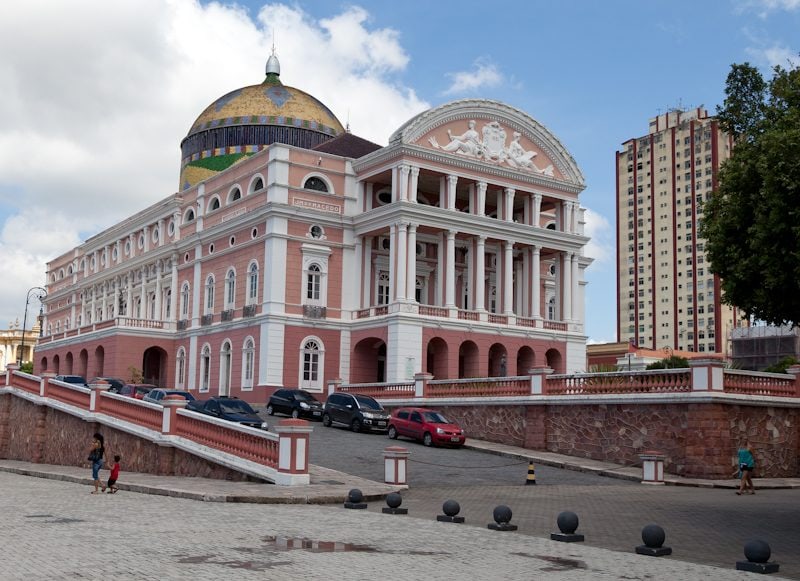In each port city, Semester at Sea organizes dozens of field programs to connect class material with cultural experiences, but often the ship’s arrival coincidentally overlaps with a local event of equal significance. This was the case last week in Manaus.
The main landmark in Manaus is the Teatro Amazonas, a rubber boom opera house built from European supplies and completed in 1896. The theater currently houses the Amazonas Philharmonic Orchestra, and the symphony performed a free show on night 3 of our visit to Manaus. After a full day of class trips throughout the Amazon region, hundreds of students dressed up and headed to the theater for a night of orchestral music, deciding to take advantage of the unique opportunity on their own. To add to the cultural experience, the Philharmonic performed a symphony from Heitor Villa-Lobos, a Brazilian native and one of the most significant Latin American composers of all time.
The line at the opera house formed early, creating the perfect environment for students to meet residents of Manaus in line and hone their Portuguese skills while relaxing on the black-and-white rubber bricks of the Teatro plaza. Students who toured the Teatro earlier in the week knew that these bricks, originally placed to silence the clip-clop of late arriving carriages, were in fact the only Brazilian feature of the entire building.
The Teatro remains both a legacy of Manaus’s imperialist past and a hub of its current resurgence. Plans for a grand opera house in the rainforest first took root during the rush of rubber plantations in the late 19th century, when wealthy American and European investors tapped the endemic rubber trees to fuel their factories up north. The opera house was discussed, drafted, and completed in the brief lavish window before the rubber market collapsed. Nearly all materials came from Europe, glass from Italy, furniture from France, iron from Scotland, and a blueprint crafted in Portugal. Even the wood was taken from Brazil, carved in Europe, and shipped back across the Atlantic. The stately theater earned Manaus the nickname “Paris of the Tropics,” but the brief boom years ended once smuggled rubber tree seeds created a competing market in the European colonies of Southeast Asia.
Today, Manaus is back on its feet, Brazil is surging in the global economy, and the formerly dormant Teatro Amazonas is once again hosting a full slate of symphony, dance, and jazz. In the late 1950s, the government declared Manaus a Free Trade Zone, inexplicably encouraging industry in the Amazon. The bold move discouraged farming in the rainforest, under the assumption that one central factory with 500 employees will use much less land than 500 individual family farms. The Free Trade Zone is both an economic and environmental success story, and has brought Manaus back into the spotlight in South America. Next up for the city: a new soccer stadium in preparation for the 2014 World Cup in Brazil.
Manaus supplied a triple threat for students on the Spring 2012 voyage: the Brazilian rainforest hosts the most biodiversity on the planet, the city boasts an economic success story in troubling times, and South America’s imperialist history is no where more visible than at the Teatro Amazonas. Nature, commerce, and culture collide in Manaus, making it an ideal location for Semester at Sea students to take material from their courses and explore it in the real world.





